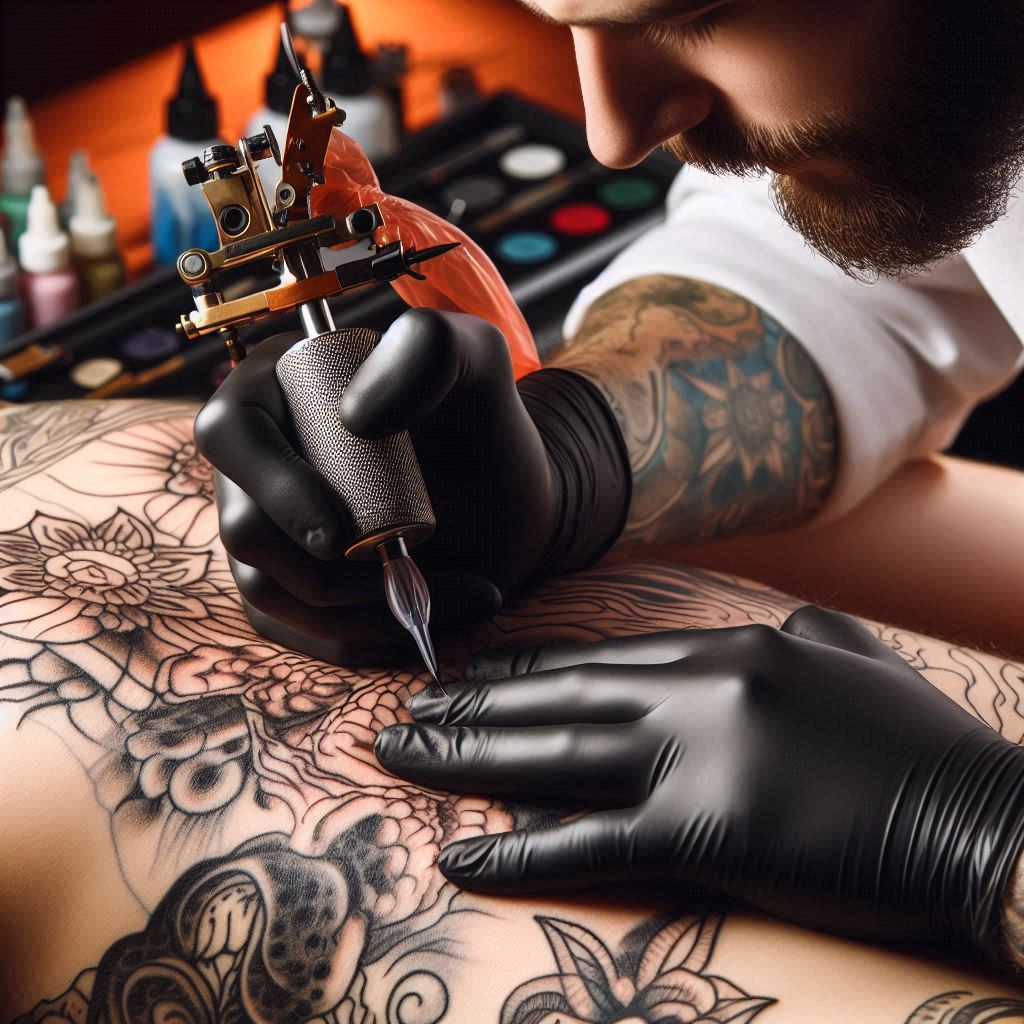1.1 How Important Is Proper Tattoo Machine Setup?
Setting up a tattoo machine correctly is crucial for smooth tattooing. Beginners should adjust voltage settings, needle depth, and machine speed according to the tattoo style. A well-set machine prevents excessive skin trauma and ensures smooth ink flow.
1.2 What Is the Best Way to Handle Tattoo Needles?
Tattoo needles come in various configurations, such as liners and shaders. Beginners must choose the correct needle for each type of work. Liners create crisp outlines, while shaders help with coloring and gradients. Always use sterile, high-quality needles to prevent infections.

1.3 How Should a Beginner Practice Tattooing?
Before working on real skin, practice on synthetic skin, fruit (like oranges or pigskin), or even rubber pads. Practicing lines, shading, and coloring will help develop steady hand movements and improve control over the tattoo machine.
1.4 What Are the Basic Tattooing Techniques?
There are three main tattooing techniques: lining, shading, and coloring. Lining requires steady hands to create clear outlines. Shading uses lighter strokes to blend ink for a smooth effect. Coloring fills in the tattoo with solid or gradient colors, requiring even ink distribution.
1.5 How to Maintain Consistent Hand Pressure?
Inconsistent pressure can lead to uneven tattoos or skin damage. Beginners should maintain a steady grip on the machine and move at a consistent speed. Practicing on fake skin helps build muscle memory for proper pressure application.
1.6 What Role Does Ink Dilution Play in Tattooing?
Ink dilution is used for shading and creating gradient effects. By mixing ink with distilled water or tattoo-specific diluents, artists can achieve different levels of transparency, ensuring smooth transitions between colors.
1.7 How Can Beginners Improve Line Work?
Line work is the foundation of most tattoos. Using a stencil, maintaining a firm grip, and following the stencil closely helps create sharp lines. Slow, controlled movements prevent shaky lines and ensure professional-quality work.
1.8 Why Is Skin Preparation Crucial Before Tattooing?
Proper skin preparation prevents infections and improves ink retention. Beginners should clean the skin with alcohol, shave the area, and apply a stencil transfer solution to ensure proper adhesion of the tattoo design.
1.9 What Safety Measures Should Beginners Follow?
Tattooing involves risks like infections and allergic reactions. Using sterilized equipment, wearing gloves, and maintaining a clean workstation ensures client safety. Proper aftercare instructions also help prevent complications.
1.10 How Can a Beginner Choose the Right Tattoo Ink?
High-quality ink leads to better color retention and healing. Beginners should research reputable tattoo ink brands that are non-toxic and FDA-approved. Black ink is usually the easiest to work with, while colors require a deeper understanding of mixing and layering.
2. How Can Beginners Ensure Tattoo Safety?
2.1 What Hygiene Practices Should a Tattoo Artist Follow?Maintaining hygiene is critical to prevent infections. Artists should wash their hands, wear disposable gloves, and use single-use needles. Workstations should be disinfected after each session.
2.2 How to Prevent Cross-Contamination?
Cross-contamination occurs when germs spread from one surface to another. Artists should cover machine grips with disposable barriers, use separate ink caps for each client, and avoid touching non-sterile surfaces during tattooing.
2.3 What Should Clients Know About Tattoo Aftercare?
Clients should keep the tattoo clean, apply recommended ointments, and avoid sun exposure. Following proper aftercare instructions prevents infections and ensures a smooth healing process.
2.4 What Are the Signs of a Tattoo Infection?
Redness, swelling, pus, and fever are signs of infection. If a client experiences these symptoms, they should seek medical attention immediately. Proper hygiene and sterilization practices help minimize infection risks.
2.5 How to Properly Store Tattoo Equipment?
Tattoo machines, needles, and ink should be stored in a clean, dry environment. Keeping supplies in sterile packaging and using them before their expiration date maintains quality and prevents contamination.